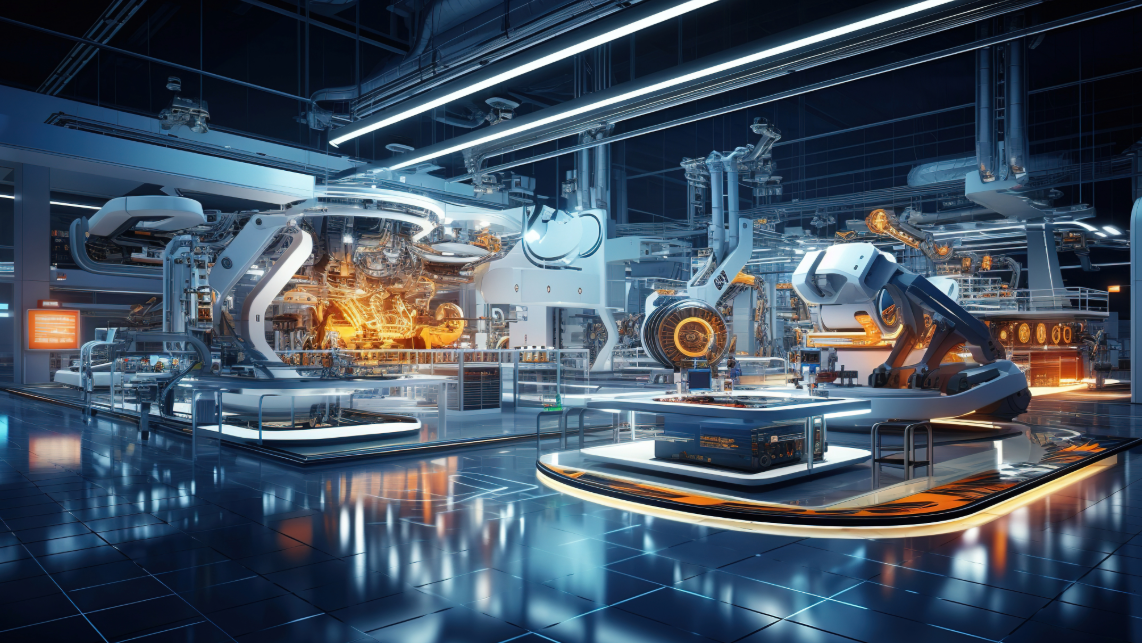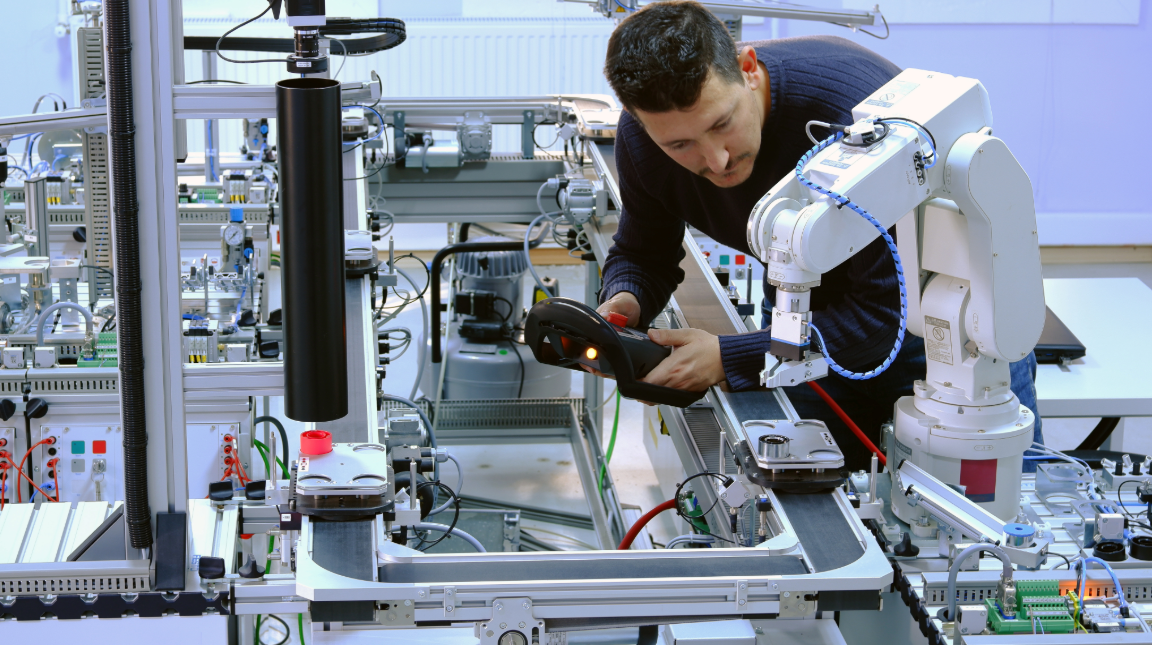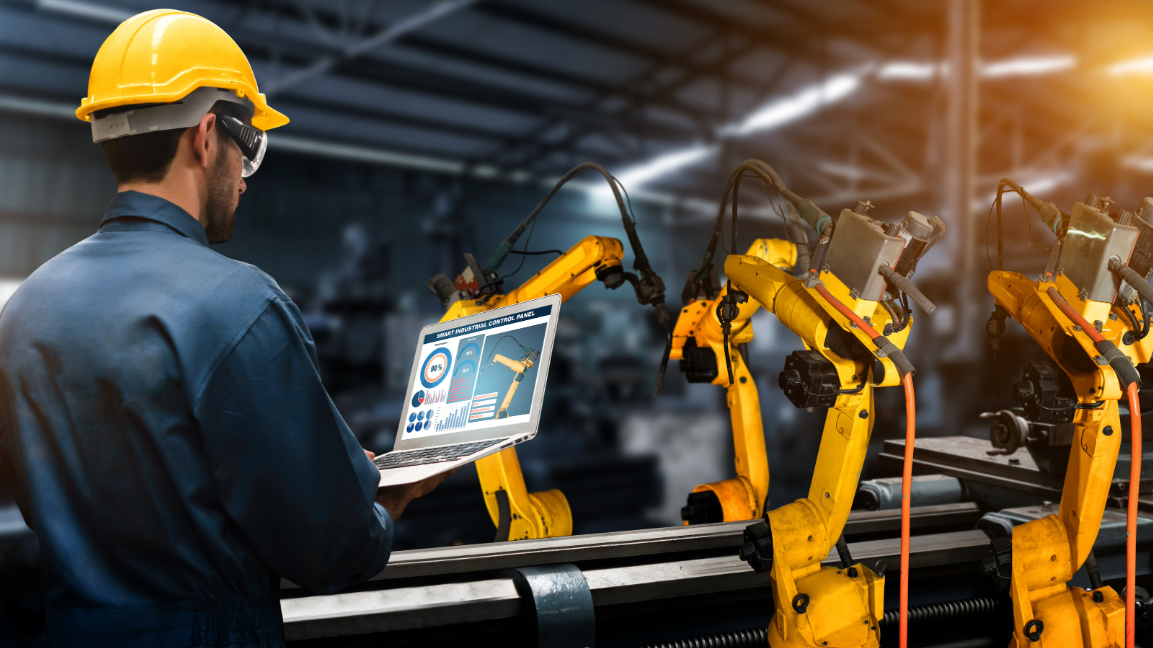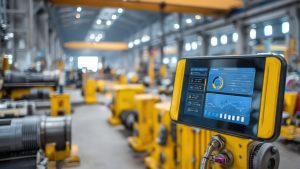How Smart Manufacturing Technologies Are Transforming Operations Today
This article is about How Smart Manufacturing Technologies Are Transforming Operations Today by optimizing efficiency, boosting product quality, and creating safer work environments. You might be thinking about which technologies are essential and how modern-day leading manufacturers are using them. Let’s explore unique examples of how these advanced technologies are revolutionizing the production enterprise and reshaping the destiny of ways things get made. Companies are increasingly adopting AI and device learning to research manufacturing information, permitting them to expect upkeep desires and reduce downtime. IoT devices offer real-time insights into gadgets’ overall performance, allowing for immediate changes that enhance productivity. Robotics is taking over repetitive responsibilities, enhancing velocity and precision while liberating human people to cognizance of greater complex challenges. How Smart Manufacturing Technologies Are Transforming Operations Today fosters a way of life of innovation and non-stop improvement, ensuring producers live competitively in a rapidly evolving panorama.
Table of Contents:
Smart Manufacturing Technologies
- Collaborative Robots (Cobots)
- Artificial Intelligence (AI) and Data Analytics
- Internet of Things (IoT)
- Virtual Reality (VR) and Augmented Reality (AR)
- 3-d Printing
- Digital Twins
Challenges and Opportunities in Smart Manufacturing
- Cost of Implementation
- Cybersecurity
- Data Management
- Upskilling the Workforce
The Future of Manufacturing with Smart Factories
Conclusion
Smart Manufacturing Technologies

The possibilities with these technologies are surely limitless as producers strive to discover modern methods to use them. These innovations are already growing in performance, exceptionality, and protection across diverse sectors. Let’s delve into a few key clever production technologies.
Collaborative Robots (Cobots)
Unlike traditional commercial robots that function in remote environments, cobots are designed to work alongside human operators, supplying a large leap ahead. Forbes reports that an outstanding 32% of modern manufacturing lines now include a combination of robots and cobots. This integration of cobots is transforming modern-day manufacturing methods in numerous ways.
Firstly, it reduces the need for human involvement in repetitive, physically worrying, and probably dangerous responsibilities. Cobots excel at these responsibilities, freeing human people for roles requiring creativity, problem-solving, and complex choice-making. This collaboration boosts productivity and enhances the safety of the business.
It creates a more dynamic and efficient manufacturing environment in which humans and robots work together seamlessly. This is a prime instance of how the era enhances, rather than replaces, the human detail in production.
Artificial Intelligence (AI) and Data Analytics
These technologies play a critical role in the shift toward fact-driven decision-making. In the past, manufacturing relied closely on historical facts and reactive responses, regularly leading to delays, inefficiencies, and missed possibilities. Today, AI and record analytics are transforming the sport.
Sensors and interconnected structures offer real-time statistics, allowing AI algorithms to become aware of patterns, anticipate ability troubles, and endorse optimized answers. For instance, AI can expect that a piece of equipment might fail. This allows manufacturers to proactively schedule renovations, minimizing downtime and warding off steeply-priced manufacturing halts. BMW’s implementation of AI in over two hundred manufacturing packages flawlessly showcases this, successfully lowering upkeep and fabric waste.
AI-powered predictive protection is reworking operations, making them more dependable and value-effective. This shift towards proactive preservation, powered by data and records analytics, is a cornerstone of modern-day production.
Internet of Things (IoT)
This generation is critical in enabling connectivity and record exchange throughout the manufacturing floor. IoT sensors embedded inside machines accumulate actual-time information about numerous components of the manufacturing system, including system performance, power consumption, material flow, and inventory stages.
By studying this fact, manufacturers can gain precious insights, identify manufacturing bottlenecks, optimize aid allocation, or even allow predictive protection. This statistics-driven approach empowers corporations to make more knowledgeable choices, streamline operations, and ultimately grow performance and profitability.
This developing desire for real-time record analysis and selection is evident in the increasing adoption of radio-frequency identification (RFID) technology. Calls for RFID are growing daily throughout diverse industries. RFID tags are used to tune and screen the movement of products and substances, providing groups with actual-time insights into their delivery chains. RFID’s appropriateness goes beyond stock management; it is crucial in minimizing issues, including fake goods and transactions performed by third parties.
Virtual Reality (VR) and Augmented Reality (AR)
They are also remodeling contemporary manufacturing unit placements, and in 2019, Assembly Magazine defined several of their programs. They provide immersive schooling experiences, allowing workers to learn and exercise complex tactics in a risk-unfastened virtual setting.
Boeing, for example, uses AR in its manufacturing techniques. They experienced a forty-fold growth in productivity while enforcing this technology for assembling wiring harnesses, demonstrating that AR isn’t only a theoretical development but a realistic device that, without delay, contributes to an extra-green and streamlined workflow.
Beyond education, AR can provide actual-time statistics and steering to technicians, together with a technician sporting AR glasses that overlay repair commands onto their field of view as they paint. The digital fact market pushed via this adoption in manufacturing is projected to skyrocket from $31.4 billion to a superb $50.42 billion by 2031. This demonstrates the great capability that both VR and AR preserve. They’re not simply developments; however, transformative technology is poised to reshape operations within the coming years.
3-D Printing
3-D printing, or additive manufacturing, has revolutionized prototyping and product development, permitting fast new releases and customization. It allows producers to create complicated designs and bring components on demand, reducing lead times and fabric waste.
Stryker, a leading medical-era organization, uses 3D printing to grow custom-designed scientific implants. It streamlines production, shortens lead times, and decreases material waste. As the demand for personalized merchandise keeps developing, so will the application of 3D printing across industries. This era empowers producers to cater to personal client wishes using a brand-new mass personalization technology.
Digital Twins
Digital dual technologies are digital replicas of physical properties, techniques, or systems. They use real-time data to simulate and analyze performance, perceive potential issues earlier than they occur, and consider unique eventualities. They are remodeling how we design, operate, and maintain complex structures.
They’re utilized in production and healthcare (virtual twins are expected to revolutionize medical trials), and as a place of job control, showcasing their versatility throughout a couple of industries. Their ability to generate real-time analysis and predictive skills can be valuable in any endeavor to maximize output and productivity and minimize risk.
Challenges and Opportunities in Smart Manufacturing

While clever production technologies promise performance and productivity, it is crucial to consider the challenges these improvements pose. Spotting these hurdles highlights areas requiring careful consideration as groups navigate virtual transformation.
Cost of Implementation
Integrating superior technologies like robotics and AI into present setups can require considerable initial investments. The proper information is that many producers find that those upfront costs are sooner or later outweighed by using lengthy-term gains, as automation allows groups to grow output, beautify precision, and reduce high-priced mistakes.
However, it’s vital to approach this modification strategically. A nicely described method incorporating phased implementation could make it feasible for organizations, particularly smaller agencies, to realize benefits early on. This strategic technique ensures a smoother transition and maximizes the return on investment.
Cybersecurity
With improved reliance on interconnected structures and information, trade comes heightened cybersecurity issues. Manufacturers must now deal with the dangers of cyberattacks targeting production traces or touchy statistics.
The production sector by myself accounted for almost 1/4—24. Eight, in fact—of cybersecurity breaches globally in 2022. This underscores the seriousness of protecting sensitive information and operations in a trendy, increasingly virtual world. Implementing sturdy cybersecurity measures is now not optionally available for protecting intellectual assets, ensuring operational continuity, and preserving patron acceptance as true.
Data Management
This is another assignment the group faces, as they must handle massive amounts of statistics gathered from diverse assets. They must spend money on the correct infrastructure and expertise to method and examine these facts.
When these statistics are treated effectively, they could offer producers treasured insights, helping them optimize processes and make more informed selections. Understanding the information cycle and how it applies in your enterprise can help you develop valuable perceptions of how to handle, process, and defend your facts. Effective data management is important for extracting significant insights, identifying tendencies, and making record-pushed choices that pressure commercial enterprises to increase.
Upskilling the Workforce
While robots are taking on many guidance and repetitive duties, there is nonetheless a large need for a professional group of workers in state-of-the-art superior production plant life. This need is not restrained to running superior machinery; it is tasks like statistical evaluation, programming, and maintaining those complex systems.
Recognizing the shift in required skill units is critical in permitting your workforce to include the modifications brought on via clever manufacturing technologies. Upskilling is not just a buzzword; it’s critical to want to deal with changing labor needs. Businesses want to provide possibilities for their personnel to learn how to work alongside this new technology, interpret information-pushed insights, and adapt to the changing nature of work.
Companies document that incorporating technology like automation ends in expanded output, going hand in hand with a huge boom in hard work productivity after investments are made into smart production packages. Deloitte conducted studies that revealed that organizations carried out profits of up to 12% in areas like manufacturing facility utilization, production output, and productivity due to their clever manufacturing unit investments. Looking beforehand, professionals predict that production flora adopting a clever manufacturing facility approach can look at the internet hard work productivity boom by 30% compared to factories’ traditional strategies.
The Future of Manufacturing with Smart Factories

Smart production, which incorporates generation and statistics-driven decisions to optimize operations, represents the evolution of large data. It permits flexibility, speedy reaction, and customization. As technology continues to strengthen quickly, the fate of manufacturing is particularly exciting. This market, which commenced at $223.6 billion, is expected to hit $985.5 billion with the aid of 2032.
Manufacturers are already adopting new technologies like AI to stay competitive before the COVID-19 pandemic. Since then, there’s been a massive push to invest even further in technologies that boost manufacturing. Before COVID, an article in Forbes Magazine mentioned that 43% of manufacturers already had smart initiatives underway, which shot up to 68% just two years later. Many businesses seem to realize that relying solely on traditional practices, such as conventional supply chain management methods, can’t deliver the flexibility needed for a constantly evolving business landscape. Smart technologies offer that flexibility.
These new solutions are meant to replace human workers partially. Instead, they will create new jobs in fields like data science, robotics, AI, and software engineering. This is already impacting manufacturing jobs as they become more high-tech and focused on managing these sophisticated automated systems.
Conclusion
Smart manufacturing technologies are transforming operations today and already have a huge impact. We see it in how robots work alongside humans on manufacturing unit floors, how artificial intelligence assists with predicting issues earlier than they arise, how data analytics helps manufacturers make smarter business choices, and how 3-D printing makes personalized merchandise on-demand at scale.
This transformation, which entails incorporating interconnected systems, actual-time information analysis, and advanced robotics, offers corporations agility, resilience, and efficiency in today’s commercial enterprise world. Embracing these advancements is not a choice but a necessity for manufacturers trying to thrive in their destiny.
As manufacturing unit technology continues to evolve, clever factory technology redefines conventional manufacturing fashions. With AI, IoT, and automatic systems, factories are becoming more adaptable and responsive, decreasing waste and optimizing resource utilization. These clever systems allow for non-stop upgrades in first-class management, quicker choice-making, and improved collaboration between machines and people. Manufacturers undertaking these innovations are positioned to compete and lead in an increasingly tech-pushed marketplace. As we circulate ahead, the function of clever factory technology will most effectively grow, providing infinite possibilities for performance, innovation, and boom.



